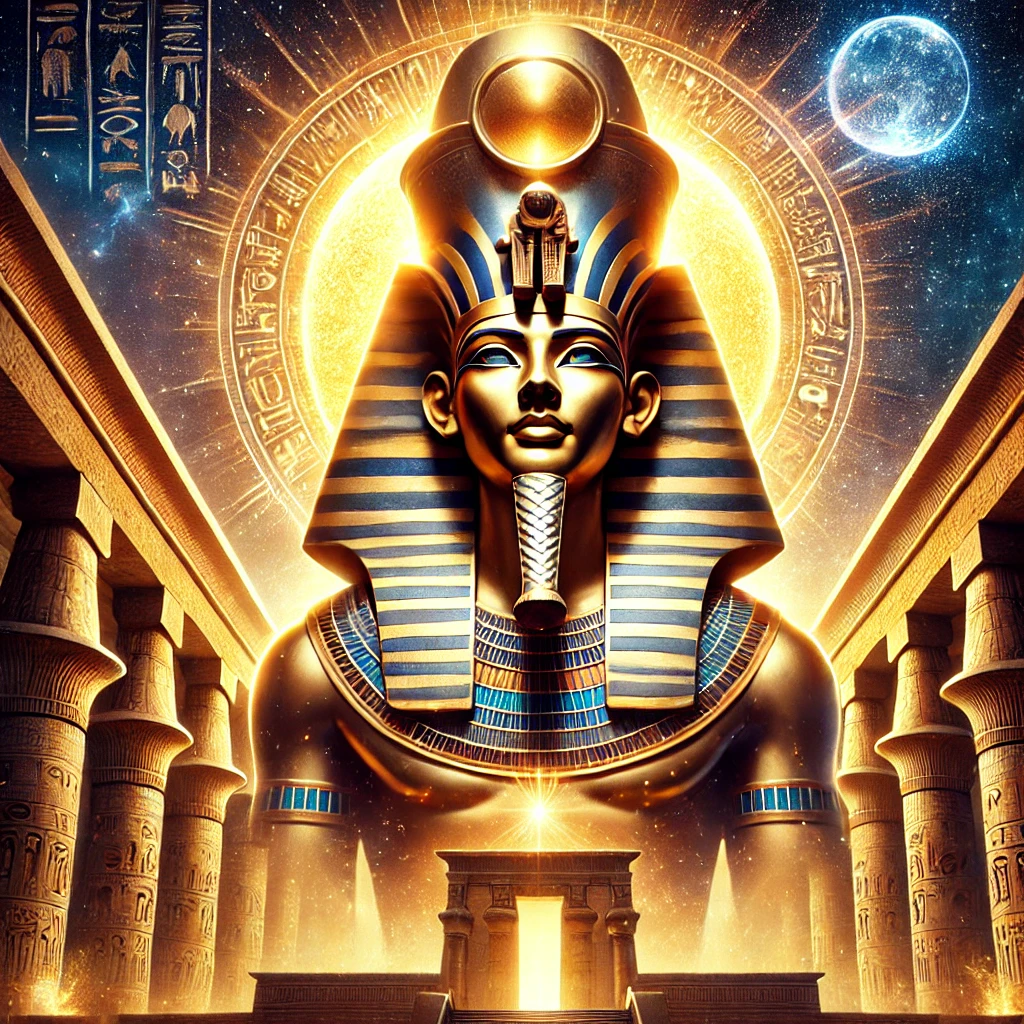Definition
Amun-Ra is one of the most significant deities in ancient Egyptian mythology, revered as both a creator god and a sun god. He represents the fusion of Amun, the god of hidden power and the unseen, with Ra, the sun god and ruler of the heavens. As the supreme deity, Amun-Ra embodies the creative force behind all existence, the source of life, and the divine authority of the pharaohs.
Origins and Evolution
Amun-Ra’s prominence in Egyptian religion evolved over centuries:
- Amun (God of the Hidden) – Originally a local deity of Thebes, Amun was associated with mystery, wind, and the unseen forces of the universe.
- Ra (Sun God) – Worshiped as the solar deity and the supreme ruler of the gods, Ra was the divine force of the sun, guiding the daily cycle of life.
- Fusion into Amun-Ra – During the New Kingdom (c. 1550–1070 BCE), Theban rulers elevated Amun to supreme status, merging him with Ra to become Amun-Ra, the all-powerful creator and sustainer of the cosmos.
Amun-Ra was considered the “King of the Gods”, and his influence extended beyond Egypt, with his worship reaching Nubia, Libya, and even the Greek and Roman worlds.
Symbols and Iconography
Amun-Ra is depicted in various forms, reflecting his dual nature:
- Human Form – A bearded man wearing a tall double-plumed crown (symbolizing divine authority).
- Ram-Headed Form – A representation of his hidden and powerful aspects, often linked to fertility.
- Solar Disk – The golden sun disk, associated with Ra’s role as the sun god.
- Sacred Animals – The ram (symbolizing virility and strength) and the scarab beetle (a symbol of rebirth).
Amun-Ra was often portrayed in solar barques (boats), sailing across the sky by day and through the underworld by night, ensuring the cycle of the sun and cosmic order.
Roles and Powers
1. The Supreme Creator
Amun-Ra was believed to be the primordial force from which all creation emerged. He was considered self-created and was called “the Hidden One”, existing beyond human perception.
2. Sun God and Cosmic Sustainer
As the solar deity, Amun-Ra was responsible for:
- Bringing light and life to the world.
- Guiding the sun across the sky in his solar barque.
- Ensuring the Ma’at (cosmic order and balance).
3. Divine Protector of Pharaohs
Egyptian rulers claimed divine legitimacy through Amun-Ra. He was considered the father of the pharaoh, granting them kingship and divine wisdom. Temples and inscriptions often depicted pharaohs receiving blessings from Amun-Ra.
4. Ruler of the Afterlife
Though primarily a sun god, Amun-Ra played a role in the afterlife, guiding souls through Duat (the underworld) and ensuring their rebirth, much like the sun rising each day.
Worship and Temples
Amun-Ra was the most widely venerated deity in Egypt, with grand temples built in his honor.
1. Karnak Temple (Thebes)
- The largest religious complex in ancient Egypt, dedicated to Amun-Ra.
- Home to the Great Hypostyle Hall, a vast sanctuary for worship.
- Hosted the Opet Festival, where Amun-Ra’s statue was carried in a sacred procession.
2. Luxor Temple
- Another major center of Amun-Ra’s worship.
- Pharaohs would undergo rituals of divine kingship here.
3. Siwa Oasis Oracle
- Amun-Ra’s oracle was consulted by leaders, including Alexander the Great, who sought divine confirmation of his rule.
The power and wealth of Amun-Ra’s priesthood became so immense that they rivaled the pharaohs, leading to shifts in religious authority throughout Egyptian history.
Amun-Ra in Later Cultures
- The Greeks identified Amun-Ra with Zeus, calling him Zeus-Ammon.
- The Romans continued his worship, linking him to Jupiter.
- Amun-Ra’s influence can be seen in esoteric traditions and modern spiritual interpretations of solar deities.
Conclusion
Amun-Ra stands as one of the most powerful and enduring gods of ancient Egypt, embodying creation, divine authority, and the sustaining force of the universe. His influence shaped Egyptian spirituality, governance, and cosmology for millennia, leaving behind a legacy that continues to inspire modern interpretations of sun worship and divine kingship.

